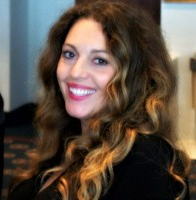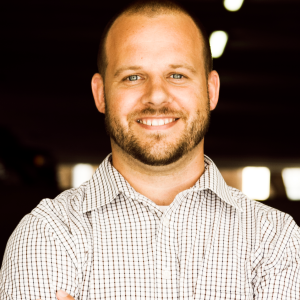
Gen Z is described as the generation born between 1997 and 2012. This means that the oldest members of Gen Z are in their mid-twenties right now, the same age when most drivers start their career in trucking. While Gen Z is only 24% of the workforce right now, that number is only going to go up since Gen Z has eclipsed millennials as the largest generation globally.
While it’s difficult to define a group of people this large, there are some common characteristics most share. These include being independent, communicative, and digital (specifically mobile) focused.
So, what does this mean for driver recruiters who want to recruit these young Gen Z drivers? Here are five tips to help you when recruiting Gen Z drivers.
1. Training Opportunities
While experience is one of the biggest things that recruiters look for, these younger drivers coming into trucking right now are the future of the industry. Carriers are seeing the benefits of offering training opportunities to their Gen Z drivers.
It’s not just Gen Z drivers who are looking for training opportunities, it’s the workforce as a whole. A LinkedIn study found that 94% of employees said they would stay at a company that invested in their career development.
If your company isn’t already, consider offering and advertising CDL training. Many young people may want to get their CDL but are put off by the high prices of driving schools. Carriers offering a way to do that affordably while guaranteeing them a job once they graduate is one of the biggest ways to recruit Gen Z drivers to your organization.
2. Set Up Career Paths
Gen Z drivers will no doubt be looking to work somewhere they can advance themselves rather than staying in the same position for years. This could mean anything from going from local driving to regional or OTR work, or it could even mean moving to a different position throughout your company. The important thing is that you have career path options set up for these young drivers.
Make sure that it’s communicated to them early on in the recruiting process that your company offers these career paths and advancement opportunities. This shows that you have a commitment to not only help the company grow, but help your drivers grow as well.
3. Use Texting to Communicate
If your recruiting team has only contacted candidates via phone and email, you may be missing out on a number of qualified young drivers. A study done by Yello Recruiting found that “86% of Gen Z and Millennials like SMS text as part of the interview process”. A separate study by LinkedIn found that, “67% of potential candidates respond within minutes to SMS text messages”.
If you aren’t doing this already, start making mobile communication a priority in your recruitment process. Just make sure that you have their consent to reach out to them via text before you do, as not overstepping boundaries and safeguarding personal information is very important to them.
4. Mobile-First Presentation
Have you ever gone to a company’s website where you had to pinch and zoom over and over again to find what you needed? That’s because it wasn’t optimized for mobile devices. Odds are, you probably didn’t have a great experience and didn’t go back to that site. The bad news is, if your company site’s not mobile optimized, young candidates could be deciding the same thing about it.
This is especially when you consider that more people globally use their smartphones to access the internet than computers, laptops, or tablets. While your job postings may be through Indeed and other job sites that are already optimized for mobile, if a candidate needs to return to your company’s site for any reason, including to just do some research on your company, you’ll want to make sure they have a quick and seamless experience. For more information on how your company can make their site mobile-first, check out this blog.
5. Quality Company Culture
Having a quality company culture can’t be overstated when recruiting any drivers into your organization, but especially Gen Z drivers. But, to have a culture that appeals to them, you need to know what they value.
As a generation, Gen Z is known for questioning everything, especially in the workplace. They don’t take much at face value, and will be quick to let people know (think about online reviews) if they feel a company is doing something wrong.
Having an internal system for gathering and answering driver comments and complaints will go a long way. This system could be anything from having an anonymous suggestion or comment box (digital may be the better option than on-site) to texting or calling drivers once every week or few weeks to check in on how they’re doing and if they have any concerns. It’s a small thing to do, but can make a big difference in recruiting and supporting Gen Z drivers.
While there are some differences when recruiting Gen Z drivers as opposed to Millennials or Gen X’ers, the core principles remain the same. Have a strong and communicative company culture, make driver training and advancement a priority, and you’ll have no problem recruiting Gen Z driver into your organization.










 PWD Partners with Drive My Way for Success
PWD Partners with Drive My Way for Success












 No matter how great your referral program is, drivers won’t participate if they don’t believe what they’re selling. Talk to your current drivers about what they enjoy most about your company, and what would make it better. More PTO, home time, and performance-based bonuses are common answers. Showing that the company is making an active effort to improve the
No matter how great your referral program is, drivers won’t participate if they don’t believe what they’re selling. Talk to your current drivers about what they enjoy most about your company, and what would make it better. More PTO, home time, and performance-based bonuses are common answers. Showing that the company is making an active effort to improve the 

 With thousands of carriers advertising jobs for truck drivers right now, how do you make sure yours resonates? If you’re recruiting for a smaller carrier, this can be even harder, since you may still be developing brand recognition. That’s not to say that creating a great job advertisement is an impossible task. It can seem daunting, but there are a few simple tips you can use to make sure your ads are getting noticed by the drivers you’re looking for.
With thousands of carriers advertising jobs for truck drivers right now, how do you make sure yours resonates? If you’re recruiting for a smaller carrier, this can be even harder, since you may still be developing brand recognition. That’s not to say that creating a great job advertisement is an impossible task. It can seem daunting, but there are a few simple tips you can use to make sure your ads are getting noticed by the drivers you’re looking for. 








